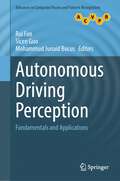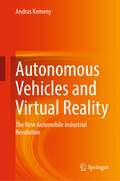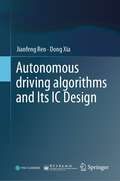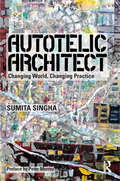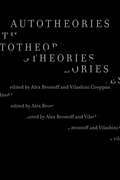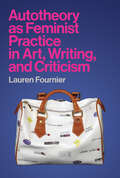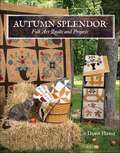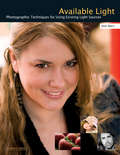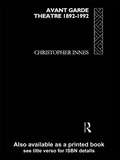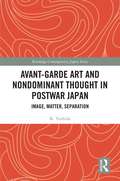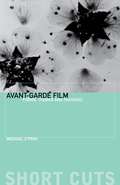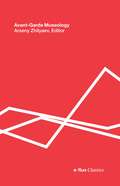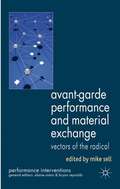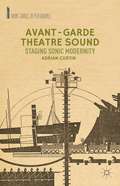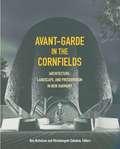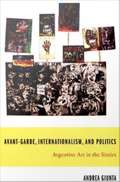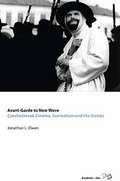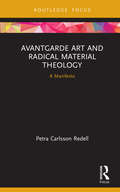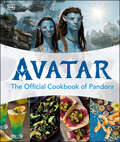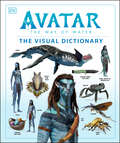- Table View
- List View
Autonomous Driving Perception: Fundamentals and Applications (Advances in Computer Vision and Pattern Recognition)
by Rui Fan Sicen Guo Mohammud Junaid BocusDiscover the captivating world of computer vision and deep learning for autonomous driving with our comprehensive and in-depth guide. Immerse yourself in an in-depth exploration of cutting-edge topics, carefully crafted to engage tertiary students and ignite the curiosity of researchers and professionals in the field. From fundamental principles to practical applications, this comprehensive guide offers a gentle introduction, expert evaluations of state-of-the-art methods, and inspiring research directions. With a broad range of topics covered, it is also an invaluable resource for university programs offering computer vision and deep learning courses. This book provides clear and simplified algorithm descriptions, making it easy for beginners to understand the complex concepts. We also include carefully selected problems and examples to help reinforce your learning. Don't miss out on this essential guide to computer vision and deep learning for autonomous driving.
Autonomous Intelligent Vehicles: Theory, Algorithms, and Implementation (Advances in Computer Vision and Pattern Recognition)
by Hong ChengThis important text/reference presents state-of-the-art research on intelligent vehicles, covering not only topics of object/obstacle detection and recognition, but also aspects of vehicle motion control. With an emphasis on both high-level concepts, and practical detail, the text links theory, algorithms, and issues of hardware and software implementation in intelligent vehicle research. Topics and features: presents a thorough introduction to the development and latest progress in intelligent vehicle research, and proposes a basic framework; provides detection and tracking algorithms for structured and unstructured roads, as well as on-road vehicle detection and tracking algorithms using boosted Gabor features; discusses an approach for multiple sensor-based multiple-object tracking, in addition to an integrated DGPS/IMU positioning approach; examines a vehicle navigation approach using global views; introduces algorithms for lateral and longitudinal vehicle motion control.
Autonomous Vehicles and Virtual Reality: The New Automobile Industrial Revolution
by Andras KemenyThis book concisely describes the technologies, human perception, and cognition issues relevant to autonomous vehicles. It also gives an insight in the changes bring about our future everyday lives.Autonomous vehicles are the future of the automobile industry. Automated driving (AD), also called self-driving, raises however several multiple questions, among them those of user safety and acceptation. Comprehensive HMI system design, with windshield display technics, will be necessary to deal with driving task delegations, bringing the use of VR or augmented reality (AR) technologies. In addition, the use of VR for all the vehicle interiors will progressively be proposed for entertainment, online business activities and for modified visual motion perception to alleviate car sickness, a form of motion sickness. Indeed, car sickness is already well known for many passengers, especially when reading or operating smartphones or other display devices. It is called to increase significantly with the introduction of autonomous vehicles where all users will be for long periods in various sitting positions. These two new trends, AD and VR, are already modifying our relationship with the world and the society. All together, they will change our way of life forever. The book will be of interest to professionals in the auto industry, researchers in automotive engineering and computer science and all those interested in the future of transport.
Autonomous driving algorithms and Its IC Design
by Jianfeng Ren Dong XiaWith the rapid development of artificial intelligence and the emergence of various new sensors, autonomous driving has grown in popularity in recent years. The implementation of autonomous driving requires new sources of sensory data, such as cameras, radars, and lidars, and the algorithm processing requires a high degree of parallel computing. In this regard, traditional CPUs have insufficient computing power, while DSPs are good at image processing but lack sufficient performance for deep learning. Although GPUs are good at training, they are too “power-hungry,” which can affect vehicle performance. Therefore, this book looks to the future, arguing that custom ASICs are bound to become mainstream. With the goal of ICs design for autonomous driving, this book discusses the theory and engineering practice of designing future-oriented autonomous driving SoC chips.The content is divided into thirteen chapters, the first chapter mainly introduces readers to the current challenges and research directions in autonomous driving. Chapters 2–6 focus on algorithm design for perception and planning control. Chapters 7–10 address the optimization of deep learning models and the design of deep learning chips, while Chapters 11-12 cover automatic driving software architecture design. Chapter 13 discusses the 5G application on autonomous drving. This book is suitable for all undergraduates, graduate students, and engineering technicians who are interested in autonomous driving.
Autonomy: The Social Ontology of Art under Capitalism
by Nicholas BrownIn Autonomy Nicholas Brown theorizes the historical and theoretical argument for art's autonomy from its acknowledged character as a commodity. Refusing the position that the distinction between art and the commodity has collapsed, Brown demonstrates how art can, in confronting its material determinations, suspend the logic of capital by demanding interpretive attention. He applies his readings of Marx, Hegel, Adorno, and Jameson to a range of literature, photography, music, television, and sculpture, from Cindy Sherman's photography and the novels of Ben Lerner and Jennifer Egan to The Wire and the music of the White Stripes. He demonstrates that through their attention and commitment to form, such artists turn aside the determination posed by the demand of the market, thereby defeating the foreclosure of meaning entailed in commodification. In so doing, he offers a new theory of art that prompts a rethinking of the relationship between art, critical theory, and capitalism.
Autotelic Architect: Changing world, changing practice
by Sumita SinghaAutotelic Architect explores how movements towards more self-initiated projects, greater collaboration and design activism have changed how architects and designers are practicing, as well as the kinds of projects they are working on. Similar to the autotelic self that transforms potential problems into enjoyable challenges, the ‘Autotelic Architect’ does not avoid societal changes, but instead learns to harness their creative potential. Using new research and case studies from past and present, the author analyses the educational and professional implications of operating as a ‘non-conventional’ progressive participatory design practice. Drawing on a range of global case studies of pioneering architects in the field, she reflects upon current and future trends at local, national and international level, and additionally examines marketing and practical issues for architects. Illustrated with more than 30 black and white images, this is a compelling read for any practicing architect.
Autotheories
by Alex Brostoff and Vilashini CooppanA transdisciplinary array of authors offering a new frame of reference for autotheory and its genre-bending synthesis of autobiography and critical theory.Autotheories tells the story of a field in formation. Building on traditions that have long fused life writing, philosophical encounter, embodied theorizing, and cultural critique, autotheory constructs new practices of critical theory. Transgressing generic boundaries and bridging stylistic registers, it crafts language that is intimate, analytic, playful, and insurgent. Editors Alex Brostoff and Vilashini Cooppan underscore autotheory&’s multiple genealogies and genre-bending forms while situating it within the contemporary political field. In this collection, autotheory emerges as a strut (of style), a straddle (of disciplines), a proliferation (of selves), an axis (of identifications), an index (of attachments), and an archive (of loves). An assemblage and an experience, Autotheories surveys the field&’s iterations and permutations. Without settling for classification or bowing to ossification, Autotheories invites you to its discursive play.Contributors include:Alex Brostoff, Jessica Bush, Judith Butler, Vilashini Cooppan, Carla Freccero, rl Goldberg, Jan Grue, Emma Lieber, Megan Moodie, Lili Owen Rowlands, John Patterson, Paul B. Preciado, Erica Richardson, Migueltzinta C. Solís, Jamieson Webster, Damon Ross Young, Stacey Young, Arianne Zwartjes
Autotheory as Feminist Practice in Art, Writing, and Criticism
by Lauren FournierAutotheory--the commingling of theory and philosophy with autobiography--as a mode of critical artistic practice indebted to feminist writing and activism.In the 2010s, the term "autotheory" began to trend in literary spheres, where it was used to describe books in which memoir and autobiography fused with theory and philosophy. In this book, Lauren Fournier extends the meaning of the term, applying it to other disciplines and practices. Fournier provides a long-awaited account of autotheory, situating it as a mode of contemporary, post-1960s artistic practice that is indebted to feminist writing, art, and activism. Investigating a series of works by writers and artists including Chris Kraus and Adrian Piper, she considers the politics, aesthetics, and ethics of autotheory.
Autumn Splendor: Folk Art Quilts and Projects
by Dawn HeeseCelebrate the pleasures of autumn days by stitching a charming patch of squash, a cornucopia of flowering delights and more. Designer Dawn Heese is back with a bountiful harvest of six quilts and two coordinating projects, a ruffled dresser scarf and whimsical wall hanging sure to warm your home. Some of the featured designs incorporate her love of combining cotton prints with the warmth of wool and velvet appliqué. She also includes her time-tested tips for appliquéing those fabrics, as well as needleturn appliqué.
Available Light: Photographic Techniques for Using Existing Light Sources
by Don MarrEmphasizing how to work with natural light rather than using supplementary lighting to create an artificial environment, photographers can use these simple techniques to mold existing light into the desired quality and shape. All situations are discussed, including overcast and sunny days, backlighting and flare, window light, daylight studios, natural reflectors, and studio lighting at home, offering a plethora of ideas for finding, diffusing, and creating light. As photographers learn the advantages of shooting with available light#151;no set up, more spontaneity, more time to concentrate on the subject, and the ability to capture preexisting relationships#151;they not only become better photographers but gain confidence and an increased awareness of their artistic medium.
Avant Garde Theatre: 1892–1992
by Christopher InnesExamining the development of avant garde theatre from its inception in the 1890s right up to the present day, Christopher Innes exposes a central paradox of modern theatre; that the motivating force of theatrical experimentation is primitivism. What links the work of Strindberg, Artaud, Brook and Mnouchkine is an idealisation of the elemental and a desire to find ritual in archaic traditions. This widespread primitivism is the key to understanding both the political and aesthetic aspects of modern theatre and provides fresh insights into contemporary social trends. The original text, first published in 1981 as Holy Theatre, has been fully revised and up-dated to take account of the most recent theoretical developments in anthropology, critical theory and psychotherapy. New sections on Heiner Muller, Robert Wilson, Eugenio Barba, Ariane Mnouchkine and Sam Shepard have been added. As a result, the book now deals with all the major avant garde theatre practitioners, in Europe and North America. Avant Garde Theatre will be essential reading for anyone attempting to understand contemporary drama.
Avant-Garde Art and Non-Dominant Thought in Postwar Japan: Image, Matter, Separation (Routledge Contemporary Japan Series)
by K. YoshidaThis book offers a reassessment of how "matter" – in the context of art history, criticism, and architecture – pursued a radical definition of "multiplicity", against the dominant and hierarchical tendencies underwriting post-fascist Japan. Through theoretical analysis of works by artists and critics such as Okamoto Taro, Hanada Kiyoteru, Kawara On, Isozaki Arata, Kawaguchi Tatsuo, and Nakahira Takuma, this highly illustrated text identifies formal oppositions frequently evoked in the Japanese avant-garde, between cognition and image, self and other, human and thing, and one and many, in mediums ranging from painting and photography, to sculpture and architecture. In addition to an "aesthetics of separation" which refuses the integrationist implications of the human, the author proposes the "anthropofugal" – meaning fleeing the human – as an original concept through which to understand matter in the epistemic universe of the postwar Japanese avant-garde. Chapters in this publication offer critical insights into how artists and critics grounded their work in active disengagement, to advance an ethics of nondominance. Avant-Garde Art and Nondominant Thought in Postwar Japan will appeal to students and scholars of Japanese studies, art history, and visual cultures more widely.
Avant-Garde Canadian Literature
by Gregory BettsIn Avant-Garde Canadian Literature, Gregory Betts draws attention to the fact that the avant-garde has had a presence in Canada long before the country's literary histories have recognized, and that the radicalism of avant-garde art has been sabotaged by pedestrian terms of engagement by the Canadian media, the public, and the literary critics. This book presents a rich body of evidence to illustrate the extent to which Canadians have been producing avant-garde art since the start of the twentieth century.Betts explores the radical literary ambitions and achievements of three different nodes of avant-garde literary activity: mystical revolutionaries from the 1910s to the 1930s; Surrealists/Automatists from the 1920s to the 1960s; and Canadian Vorticists from the 1920s to the 1970s. Avant-Garde Canadian Literature offers an entrance into the vocabulary of the ongoing and primarily international debate surrounding the idea of avant-gardism, providing readers with a functional vocabulary for discussing some of the most hermetic and yet energetic literature ever produced in this country.
Avant-Garde Film: Forms, Themes and Passions (Short Cuts)
by Michael O'PrayAvant-Garde Film: Forms, Themes and Passions examines the variety of concerns and practices that have comprised the long history of avant-garde film at a level appropriate for undergraduate study. It covers the developments of experimental film-making since the modernist explosion in the 1920s in Europe through to the Soviet film experiments, the American Underground cinema and the French New Wave, structuralism and contemporary gallery work of the young British artists. Through in-depth case-studies, the book introduces students not only to the history of the avant-garde but also to varied analytical approaches to the films themselves - ranging from abstraction (Richter, Ruttmann) to surreal visions (Bunuel, Wyn Evans), underground subversion (Jack Smith, Warhol) to experimental narrative (Deren and Antonioni).
Avant-Garde Film: Forms, Themes, and Passions
by Michael O'PrayMichael O'Pray is Reader in Film in School of Art and Design, University of East London and has published widely on experimental cinema and artists' film and video.
Avant-Garde Museology: e-flux classics
by Arseny ZhilyaevThe museum of contemporary art might be the most advanced recording device ever invented. It is a place for the storage of historical grievances and the memory of forgotten artistic experiments, social projects, or errant futures. But in late nineteenth and early twentieth-century Russia, this recording device was undertaken by artists and thinkers as a site for experimentation. Arseny Zhilyaev&’s Avant-Garde Museology presents essays documenting the wildly encompassing progressivism of this period by figures such as Nikolai Fedorov, Aleksandr Rodchenko, Kazimir Malevich, Alexander Bogdanov, and others—many which are translated from the Russian for the first time. Here the urgent question is: How might the contents of the museum be reanimated so as to transcend even the social and physical limits imposed on humankind? Contributors: David Arkin; Vladimir Bekhterev; Alexander Bogdanov; Osip Brik; Vasiliy Chekrygin; Leonid Chetyrkin; Nikolai Druzhinin; Nikolai Fedorov; Pavel Florensky; R. N. Frumkina; M. S. Ilkovskiy; V. I. Karmilov; V. Karpov; Valentin Kholtsov; P. N. Khrapov; Yuriy Kogan; Natalya Kovalenskaya; Nadezhda Krupskaya; S. P. Lebedyansky; A. F. Levitsky; Vera Leykina (Leykina-Svirskaya); Ivan Luppol; Kazimir Malevich; Andrey Platonov; Nikolay Punin; Aleksandr Rodchenko; Yuriy Samarin; I. F. Sheremet; Andrey Shestakov; Natan Shneerson; Ivan Skulenko; M. Vorobiev; N. Vorontsovsky; Boris Zavadovsky; I. M. Zykov.
Avant-Garde Performance and Material Exchange
by Mike SellAssembling a remarkable group of scholars, these essays explore how the circulation and exchange of 'vectors of the radical' shape the avant-garde. Mapping the movement of scripts, theatre activists, performances, and other material entities, they provide unprecedented perspectives on the transnational performance culture of the avant-garde.
Avant-Garde Theatre Sound
by Adrian CurtinSound experimentation by avant-garde theatre artists of the late-nineteenth and early-twentieth centuries is an important but ignored aspect of theatre history. Curtin explores how artists engaged with the sonic conditions of modernity through dramatic form, characterization, staging, technology, performance style, and other forms of interaction.
Avant-Garde and Psychotechnics: Science, Art and Technology in the Early Soviet Union (Science, Technology and Culture, 1700-1945)
by Margarete VöhringerAvant-Garde and Psychotechnics presents an innovative look at the Russian avant-garde and its cultural encounters with the sciences in the 1920s. The book examines some of the lesser known entanglements between architects, filmmakers and philosophers, on the one hand, and experimental psychologists and physiologists on the other. In Russia, famous avant-garde artists, such as El Lissitzky, Vassily Kandinsky and Dziga Vertov, helped propagate a movement referred to as "psychotechnics" that was emerging at the time in Germany and the United States and eventually led to a "psychotechnical boom." At the end of the story told in the book, it becomes clear that this boom continues to the present day. By analyzing concrete projects undertaken by Russian artists and scientists in cooperation with one another, and by drawing on as-yet-unpublished archival material, Avant-Garde and Psychotechnics challenges the established notion of socialist sciences. At the same time, it provides an entirely new picture of what was thought to be modern art, thereby demonstrating that artistic experimentation had much more than a mere metaphorical meaning in Russian arts in the 1920s. In 2007 Avant-Garde and Psychotechnics was acknowledged with an award for interdisciplinary research by the Wilhelm-Ostwald-Society, Großbothen. In 2011 the book received funding from the VolkswagenStiftung to be translated into English and Russian (the Russian edition was published by NLO books in 2019). The original German edition also received favorable reviews in NZZ, NTM, Derive, Junge Welt and Sehepunkte.
Avant-Garde in the Cornfields: Architecture, Landscape, and Preservation in New Harmony
by Michelangelo Sabatino Ben NicholsonA close examination of an iconic small town that gives boundless insights into architecture, landscape, preservation, and philanthropyAvant-Garde in the Cornfields is an in-depth study of New Harmony, Indiana, a unique town in the American Midwest renowned as the site of two successive Utopian settlements during the nineteenth century: the Harmonists and the Owenites. During the Cold War years of the twentieth century, New Harmony became a spiritual &“living community&” and attracted a wide variety of creative artists and architects who left behind landmarks that are now world famous. This engrossing and well-documented book explores the architecture, topography, and preservation of New Harmony during both periods and addresses troubling questions about the origin, production, and meaning of the town&’s modern structures, landscapes, and gardens. It analyzes how these were preserved, recognizing the funding that has made New Harmony so vital, and details the elaborate ways in which the town remains an ongoing experiment in defining the role of patronage in historic preservation.An important reappraisal of postwar American architecture from a rural perspective, Avant-Garde in the Cornfields presents provocative ideas about how history is interpreted through design and historic preservation—and about how the extraordinary past and present of New Harmony continue to thrive today. Contributors: William R. Crout, Harvard U; Stephen Fox, Rice U; Christine Gorby, Pennsylvania State U; Cammie McAtee, Harvard U; Nancy Mangum McCaslin; Kenneth A. Schuette Jr., Purdue U; Ralph Schwarz; Paul Tillich.
Avant-Garde, Internationalism, and Politics: Argentine Art in the Sixties
by Andrea GiuntaThe 1960s were heady years in Argentina. Visual artists, curators, and critics sought to fuse art and politics; to broaden the definition of art to encompass happenings and assemblages; and, above all, to achieve international recognition for new, cutting-edge Argentine art. A bestseller in Argentina, Avant-Garde, Internationalism, and Politics is an examination of the 1960s as a brief historical moment when artists, institutions, and critics joined to promote an international identity for Argentina's visual arts. The renowned Argentine art historian and critic Andrea Giunta analyzes projects specifically designed to internationalize Argentina's art and avant-garde during the 1960s: the importation of exhibitions of contemporary international art, the sending of Argentine artists abroad to study, the organization of prize competitions involving prestigious international art critics, and the export of exhibitions of Argentine art to Europe and the United States. She looks at the conditions that made these projects possible--not least the Alliance for Progress, a U. S. program of "exchange" and "cooperation" meant to prevent the spread of communism through Latin America in the wake of the Cuban Revolution--as well as the strategies formulated to promote them. She describes the influence of Romero Brest, prominent art critic, supporter of abstract art, and director of the Centro de Artes Visuales del Instituto Tocuato Di Tella (an experimental art center in Buenos Aires); various group programs such as Nueva Figuracin and Arte Destructivo; and individual artists including Antonio Berni, Alberto Greco, Len Ferrari, Marta Minujin, and Luis Felipe No. Giunta's rich narrative illuminates the contentious postwar relationships between art and politics, Latin America and the United States, and local identity and global recognition.
Avant-garde To New Wave
by Jonathan L. OwenThe cultural liberalization of communist Czechoslovakia in the 1960s produced many artistic accomplishments, not least the celebrated films of the Czech New Wave. This movement saw filmmakers use their new freedom to engage with traditions of the avant-garde, especially Surrealism. This book explores the avant-garde's influence over the New Wave and considers the political implications of that influence. The close analysis of selected films, ranging from the Oscar-winning Closely Observed Trains to the aesthetically challenging Daisies, is contextualized by an account of the Czech avant-garde and a discussion of the films' immediate cultural and political background.
Avantgarde Art and Radical Material Theology: A Manifesto (Routledge Focus on Religion)
by Petra Carlsson RedellTheological thought has long been focused on the meaning to be found in our existence, but it has tended to neglect what it might offer to those seeking how to prolong and improve our physical existence in this world. In conversation with twentieth-century materialist art and thought, this book presents a radical theology that engages directly with the political and ecological issues of our time. The book introduces a new thinker to the theological sphere, Russian avantgarde artist Liubov Popova (1889–1924). She was a woman acknowledged for her artistic and intellectual talent and yet is never discussed in relation to the twentieth-century thinkers with whom her ideas have obvious connections. Popova’s art and thought are discussed together with thinkers like Walter Benjamin, Donna Haraway, Gilles Deleuze and Paul Tillich, along with ecotheological and theopolitical perspectives. Inspired by the activist creativity of avantgarde art, the book’s final chapter, playfully yet with deadly seriousness, presents a manifesto for radical theology today. This is a work of theological activism that demonstrates the benefit of allowing new voices into the conversations around art, spirituality and our planet. As such, it will be of keen interest to academics in Theology, Religion and the Arts and the Philosophy of Religion.
Avatar The Official Cookbook of Pandora
by DKBe transported to the breathtaking locations of Avatar and Avatar: The Way of Water with more than 50 delicious recipes inspired by the lush biomes of Pandora.Experience the Hallelujah Mountains&‘ High Camp, the secret cave encampment of the Omatikaya, the reef atolls of the Metkayina clan and sacred sites such as the Tree of Souls in a new, mouthwatering way through carefully curated recipes inspired by the peaceful Na&’vi lifestyle. Feast on everything from Pandoran pancakes and Sully family shakshuka, to delicious frittatas, fish dishes, soups, salads, and stews, topped off with Na&’vi deserts, sunrise cocktails, and frozen mocktails.This official cookbook conjures the magical landscapes, flora, fauna, and atmosphere of James Cameron&’s Avatar, all lavishly photographed for movie fans and foodies alike.
Avatar The Way of Water The Visual Dictionary
by Ben Procter Joshua Izzo Zachary Berger Dylan Cole Reymundo PerezDive into the depths of Avatar: The Way of Water with this definitive guide. Created in close collaboration with James Cameron&’s Lightstorm Entertainment and written by experts who worked on the film, this authoritative book is packed with stunning exclusive details. This must-have visual guide showcases the characters, creatures, vehicles, weapons, and locations from the latest adventure in Pandora. Meet the next generation of Jake Sully and Neytiri&’s family, including the mysterious Kiri and the heroic Neteyam, and their brave new allies among the Metkayina clan. Discover the majestic tulkun, speedy skimwings, and the other fauna and flora of Pandora&’s oceans. Examine the latest fearsome RDA vehicles and the specialist recom troops under Colonel Quaritch&’s command. Uncover the inner workings of Bridehead City and the sacred Cove of the Ancestors. With a foreword by Sigourney Weaver, Avatar: The Way of Water: The Visual Dictionary is the perfect gift for Avatar fans of all ages. © 2022 20th Century Studios.
